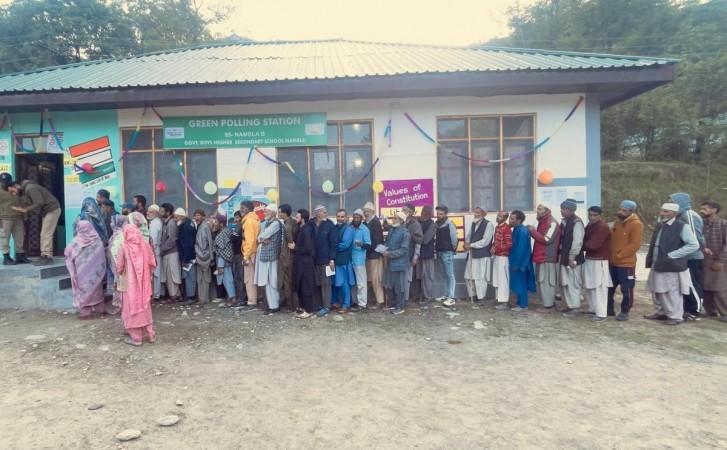
Baramulla Lok Sabha constituency of north Kashmir created history with a rough estimate of over 59 percent turnout in the districts of Baramulla, Kupwara, Bandipora, and Budgam districts partly.
"Fractional correction is expected in the percentage figure, as at some of the Polling Stations voting continued even after 6.00 pm and many polling parties are yet to reach the reception center. This remarkable participation marks a new era of peace and civic engagement in these districts", read a communique issued here today by the office of J&K Chief Electoral Officer, Pandurang K Pole.
This year's elections were conducted without any boycott calls or intimidation, showcasing the voters' unwavering belief in the power of the ballot. Not a single polling station reported zero votes, which is a testament to the widespread enthusiasm and commitment to the democratic process. The corresponding percentage for the last Lok Sabha election in 2019 was 37.41 %.
Sr. no Year Baramulla Lok Sabha seat
1 2019 37.41 percent
2 2014 38.96 percent
3 2009 41.84 percent
4 2004 35.65 percent
5 1999 27.79 percent
6 1998 41.94 percent
7 1996 46.65 percent
8 1991 No election was held, due to turmoil
9 1989 5.48 percent
10 1984 61.09 percent
11 1980 56.02 percent
12 1977 56.97 percent
13 1971 50.62 percent
14 1967 51.35 percent
The highest ever poll percentage in Baramulla Parliamentary Constituency, since the eruption of terrorism in Kashmir was recorded in the year 1996 at 46.65%, and in the history of Baramulla Lok Sabha sear highest poll percentage was (approx.) 61.09 % in year 1984. This year's poll percentage is definitely the second highest in the democratic history of Baramulla Lok Sabha and may likely be the highest, as final figures are yet to reach from remote areas and also two assembly segments– Budgam and Beerwah have been added in recent de-limitation, we can say it is highest for the Baramulla PC in today's size.

The CEO has attributed this substantially increased record polling percentage to improved security – law and order environment in the last 4-5 years, mobilization by 22 candidates and political parties, election awareness done by Deputy Commissioners and CEO office through SVEEP activities, and more importantly voters strong belief that it is the ballot which can lead to sustainable development.
Polling was held at the 2103 polling stations
Polling took place in 2,103 polling stations across the Baramulla Parliamentary constituency with live webcasting at all the polling stations. Voting started at 7 a.m. across the Baramulla Lok Sabha seat with long queues of enthusiastic voters waiting to cast their votes. Demonstrating the spirit of democracy, the voters of Baramullah, Kupwara, Bandipora, and Budgam showed up in record numbers to cast their votes in a significant show of faith in the election process.
#KashmirGoesToPoll
— CEO UT OF J&K (@ceo_UTJK) May 20, 2024
Glimpses of polling coming from Uri, Baramulla. Visit your Polling Station and Cast your vote now.#ChunavKaParv #DeshKaGarv #IVote4Sure #NoVoterToBeLeftBehind #theyouthofjk @ECISVEEP @SpokespersonECI @diprjk @airnewsalerts @DDNewslive @DCBaramulla @ANI pic.twitter.com/DDeWdu173r
The spirit of democracy has triumphed and not even a single incident of stone pelting or any kind of violence has been reported on poll day. The enthusiasm among the political parties, who are an important stakeholder in the democratic process can be gauged from the fact that a record number of applications regarding various permissions have been received on the Suvidha portal and they were facilitated to hold public meetings/ rallies etc in all nook and corner of the constituency.
Polling held without any violence
The campaigning in the Baramulla Lok Sabha seat has been violence-free and has witnessed historic participation from the voters. There were around 21,000 Kashmiri migrant electors in the Baramulla Lok Sabha seat who opted for voting at 26 Special Polling Stations established at Jammu (21), Udhampur (01), and Delhi (04). At these 26 special polling stations, there was a voter turnout of 32 % at Jammu and around 50 % at Udhampur and Delhi. It is also the first time that the migrant community has turned to vote in such large numbers.








